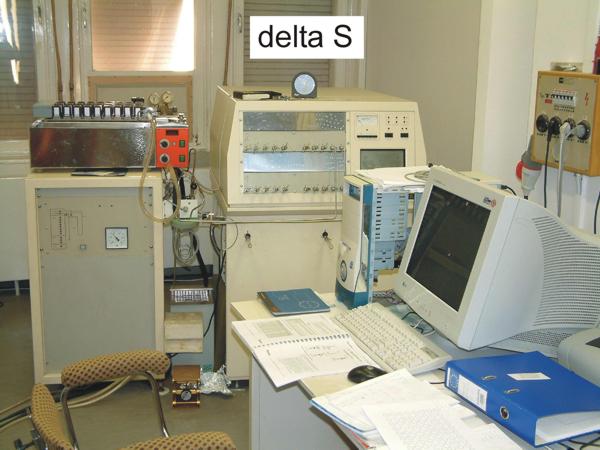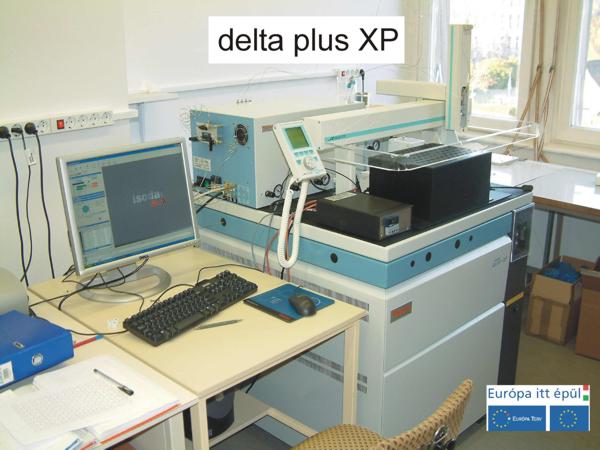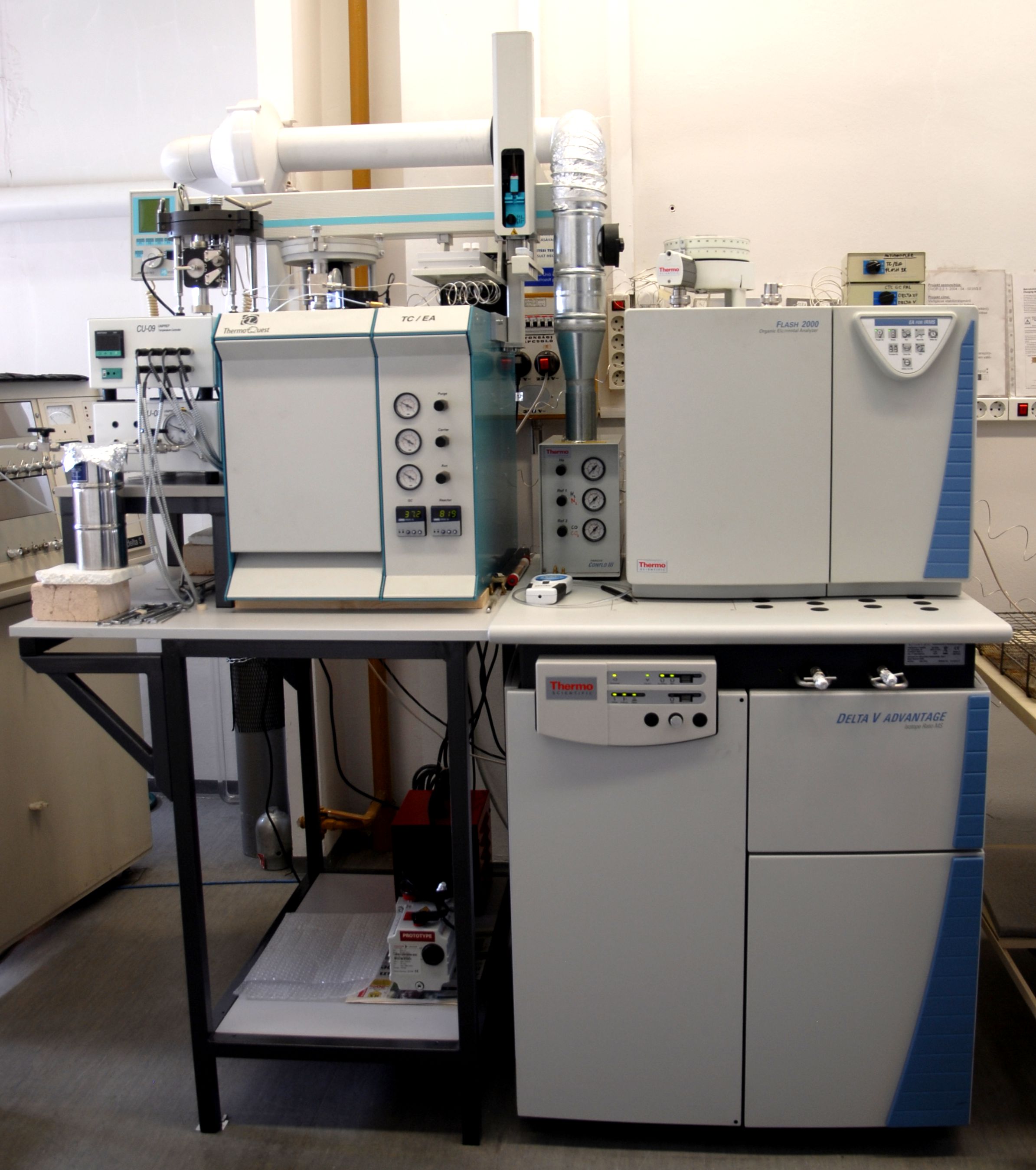



Researchers
- Attila Demény (Full member of the Academy, director)
- György Czuppon (PhD)
- István Fórizs (PhD)
- Sándor Kele (PhD)
- Ariana Gugora (PhD)
Technicians
- István Hegyi, chemistry engineer
The laboratory was established in 1990. The laboratory is operated by István Hegyi.
Until 2005 the stable isotope laboratory was equipped with a Finnigan MAT delta S isotope ratio mass spectrometer that has a collector system for 13C/12C, 18O/16O, 15N/14N and 34S/32S ratio determinations in CO2, N2 and SO2 gases, and a collector system for D/H ratio determination in H2 gas. In 2005 a new continuous-flow Finnigan delta plus XP mass spectrometer was purchased and installed. It can analyse the same isotope compositions, but the required sample amount is very low down to 1 micromole. A new mass spectrometer (Thermo Finnigan delta V) equipped with a TC/EA and an elemental analyzer device was installed in 2014. Additionally the laboratory has two laser spectroscope (Los Gatos Instruments) for water H-O isotope analyses, with one of the spectroscopes dedicated to fluid inclusion research.
The laboratory is capable to analyse the following types of materials. This description contains some observations that might be useful to the reader interested in the stable isotope preparation techniques.
Water
Hydrogen and oxygen isotope compositions are measured using automatic on-line gas-H2O equilibration devices (Roether 1970) in case of brines. Waters with low salt content are analysed using laser spectroscopes.
Carbonate
δ13C and δ18O values are determined in calcite, dolomite, ankerite, siderite and magnesite using the traditional off-line (with the delta S) or automated on-line (delta plus XP) H3PO4-carbonate reaction.
Fluid inclusions
Inclusion fluids are analysed by thermal decrepitation or - in case of H-bearing contaminant - vacuum crushing, followed by analyses using a laser spectroscope.
Automated analyses of organic matter and hydrous minerals
Stable H-C-N-O isotope analyses of organic (e.g, cellulose) samples by means of TC/EA and elemental analyzers. An on-line water vapor equilibration unit is used to correct for exchangable hydrogen content. The TC/EA unit is also used for H isotope analyses of H-bearing minerals (like biotite or amphibole).
CO2 in air
CO2 is usually analysed for 13C/122C and 18O/16O ratios by freezing at liquid nitrogen temperature. However, N2O - with the same molecule mass - is frozen together with CO2 and hence a correction factor is applied. Another method involves separation of CO2 and N2O by gas chromatography and analysing the CO2 separately. Since one of our projects dealt with polluted urban air that may contain anthropogenic N2O from different sources, the gas chromatographic separation is chosen.
Research areas
-
Isotope geochemistry (Attila Demény)
- isotope geochemistry of the upper mantle (Canary Islands, Pannonian Basin, carbonatites)
- isotope geochemistry of mass extinction events (joint project with József Pálfy)
-
Isotope hydrology (István Fórizs)
- protection of water resources
- secular variation of River Danube
- cave dripping water, and thermal waters
- CO2 in air (Attila Demény). 1998-1999: Academy Research Project; 2000-2003: joint NWO-OTKA project with the Hungarian Meteorological Service (László Haszpra) and the University of Groningen.
- Stable isotope geochemistry of speleothemes (Attila Demény, György Czuppon), freshwater limestones (Sándor Kele).
- The methods of stable isotope geochemistry are also applied in soil geochemistry studies (Bernadett Bajnóczi).
- The GEOCHEMISTRY & PALEOCLIMATE Research Group has been established to coordinate research activities within the Institute for Geochemical Research related to paleoclimatology.